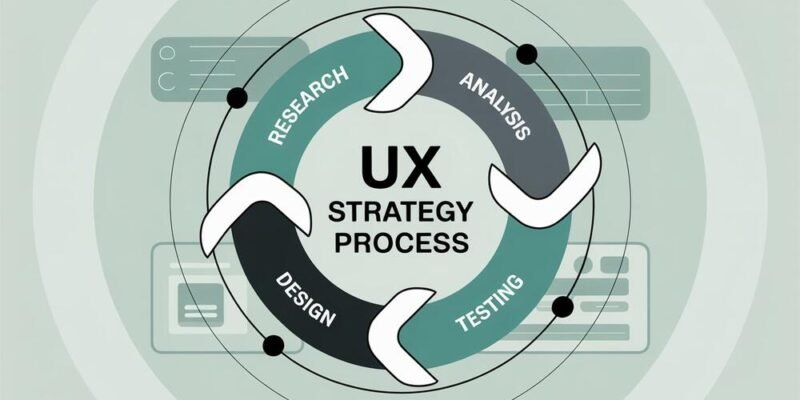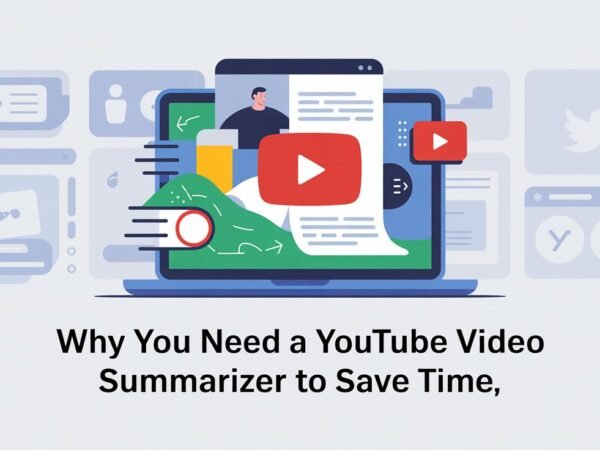A good user experience doesn’t happen by chance. Behind every intuitive interface and smooth interaction is a well-defined UX strategy. This strategy is more than a roadmap; it’s a guiding philosophy that aligns business goals with user needs to create meaningful digital experiences. While “UX design” often gets associated with visuals, colors, and layouts, the real value begins long before any pixel is placed. The UX strategy process sets the foundation, helping teams focus on why they’re building a product in the first place and what success looks like.
Research: Where the Strategy Begins
The first step in any UX strategy process is comprehensive research. This isn’t just about user interviews or surveys, though those are important. It’s about understanding the entire ecosystem in which the product exists. What problems are users trying to solve? How do they behave today, and how do they want to behave tomorrow? What are competitors doing, and what gaps exist in the market? These insights form the bedrock of a strategic approach to user experience. Without them, design decisions are built on guesswork.
Stakeholder interviews also play a significant role. Understanding the business goals, technical constraints, and product vision ensures the user experience aligns with broader organizational objectives. The goal is alignment between what the business wants to achieve and what the user needs.
Defining the Experience Vision
Once the research is complete, teams can begin defining the experience vision. This is where user personas, journey maps, and experience principles are formed. It’s not about drawing wireframes but outlining the experience the product should offer. Is it meant to feel empowering, playful, efficient, or calming? These emotional and functional goals influence every design decision that follows.
A well-articulated UX strategy includes clear objectives. It outlines which user needs the product will address, what success metrics will be used, and which features are essential. When done correctly, this strategy prevents teams from wasting time on unnecessary features or features that don’t add value.
Prototyping with Purpose
With the experience vision in place, it’s time to move into prototyping. This is where ideas become tangible, allowing teams to test assumptions and gather feedback. However, unlike design-only approaches, strategic UX prototyping is always guided by earlier research and planning. Every button placement, content block, or interaction choice serves a defined purpose.
Early-stage prototypes can be simple sketches or low-fidelity wireframes. They focus on structure and flow, helping validate whether users can easily accomplish key tasks. Higher-fidelity prototypes add detail and polish as confidence builds, simulating the final product more closely. Collaboration at this stage is essential. Designers, developers, and product managers must work closely to ensure that what’s being built matches the original strategy.
Bringing in a partner like a creative London UX design agency during this phase can be a turning point for many companies. These agencies often provide fresh perspectives, helping bridge gaps between vision and execution while keeping the user’s needs front and center.
Testing, Iterating, and Aligning with Business Goals
No UX strategy is complete without iteration. Prototypes need to be tested in the hands of real users. Observing how people interact with your product can uncover pain points you didn’t expect or reveal surprising behaviors that inspire new ideas. This testing phase ensures the user has the experience to design feedback loops extending into analytics. Once the product is live, metrics like user retention, task completion rate, and conversion funnel drop-offs tell you whether your strategy works.
These data points should inform ongoing improvements and adjustments, aligning the experience with user needs and business goals. It’s essential to recognize that UX strategy isn’t a one-and-done task. Markets change, technologies evolve, and user expectations grow. A living strategy adapts to these shifts, helping your product stay relevant and competitive.
Why UX Strategy Is More Than Just a Trend
Too often, companies rush into design without strategy, hoping that beautiful visuals will be enough to win over users. But in today’s digital world, that’s not enough. Users are savvy, and they have high expectations. They want tools that solve their problems, respect their time, and offer genuine value. A thoughtful UX strategy is how you deliver that.
It connects every part of product development, from business and engineering to marketing and customer service. It ensures that your team is solving the correct problems. Most importantly, it increases the chances of building something users care about.
Ultimately, UX strategy is not just a phase—it’s a mindset that prioritizes clarity, empathy, and purpose at every step of the product journey. Whether launching a startup or transforming an enterprise platform, investing in a solid UX strategy is among the most impactful choices.
Do Read: Web Whiteboard: Whiteboard for Online Collaboration













